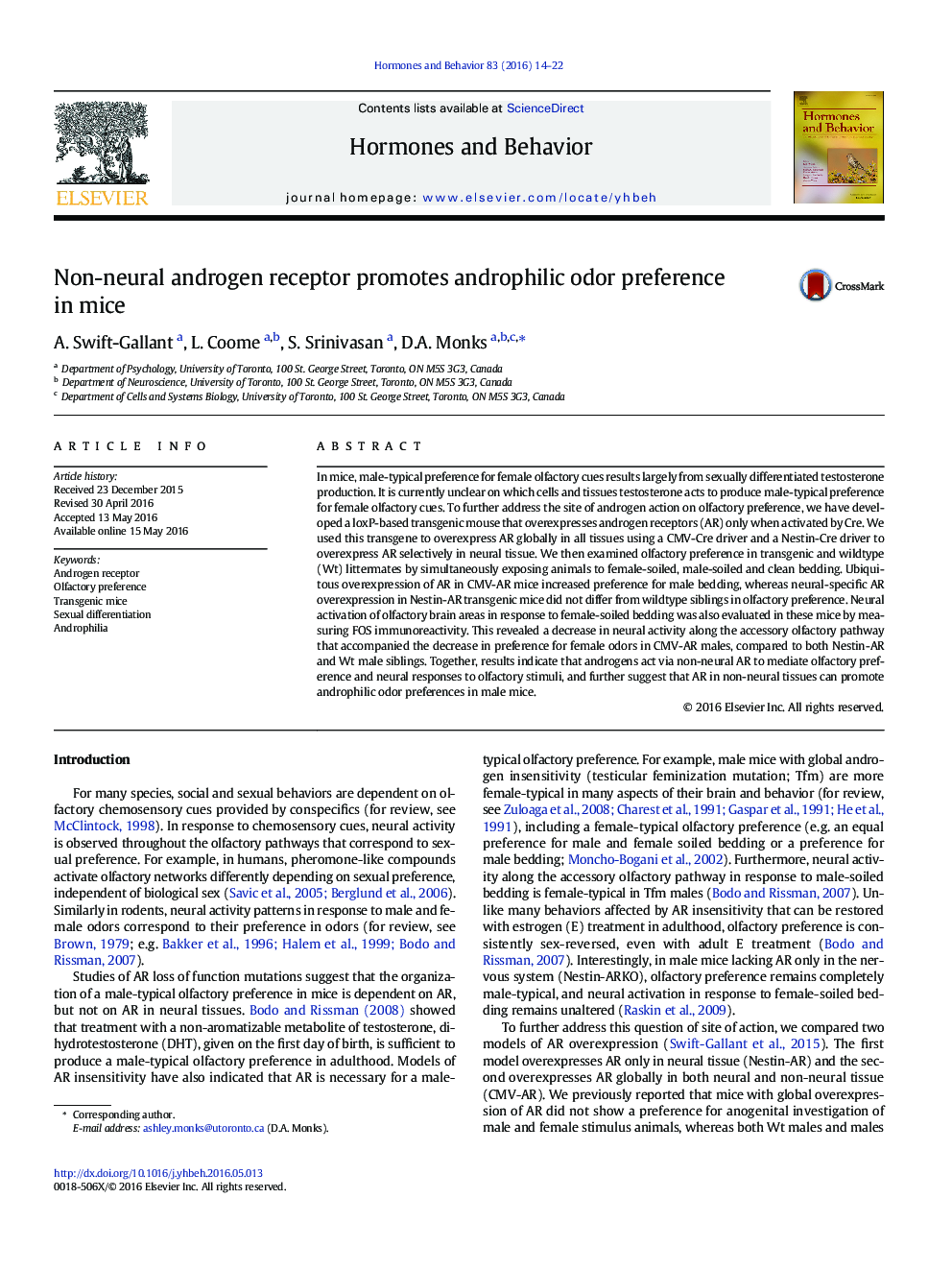| Article ID | Journal | Published Year | Pages | File Type |
|---|---|---|---|---|
| 6794368 | Hormones and Behavior | 2016 | 9 Pages |
Abstract
In mice, male-typical preference for female olfactory cues results largely from sexually differentiated testosterone production. It is currently unclear on which cells and tissues testosterone acts to produce male-typical preference for female olfactory cues. To further address the site of androgen action on olfactory preference, we have developed a loxP-based transgenic mouse that overexpresses androgen receptors (AR) only when activated by Cre. We used this transgene to overexpress AR globally in all tissues using a CMV-Cre driver and a Nestin-Cre driver to overexpress AR selectively in neural tissue. We then examined olfactory preference in transgenic and wildtype (Wt) littermates by simultaneously exposing animals to female-soiled, male-soiled and clean bedding. Ubiquitous overexpression of AR in CMV-AR mice increased preference for male bedding, whereas neural-specific AR overexpression in Nestin-AR transgenic mice did not differ from wildtype siblings in olfactory preference. Neural activation of olfactory brain areas in response to female-soiled bedding was also evaluated in these mice by measuring FOS immunoreactivity. This revealed a decrease in neural activity along the accessory olfactory pathway that accompanied the decrease in preference for female odors in CMV-AR males, compared to both Nestin-AR and Wt male siblings. Together, results indicate that androgens act via non-neural AR to mediate olfactory preference and neural responses to olfactory stimuli, and further suggest that AR in non-neural tissues can promote androphilic odor preferences in male mice.
Related Topics
Life Sciences
Biochemistry, Genetics and Molecular Biology
Endocrinology
Authors
A. Swift-Gallant, L. Coome, S. Srinivasan, D.A. Monks,
